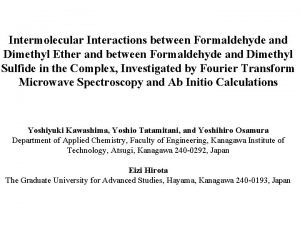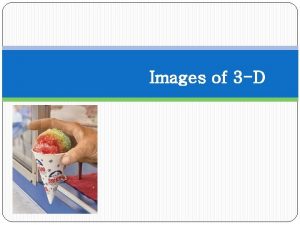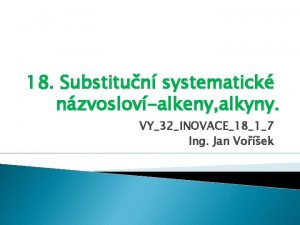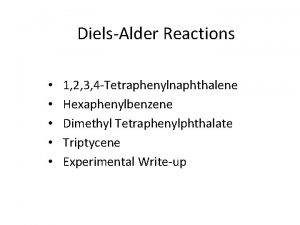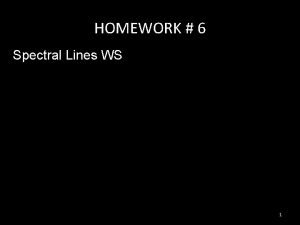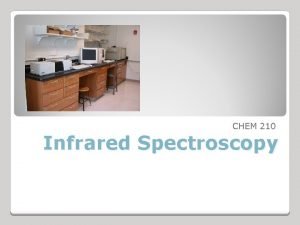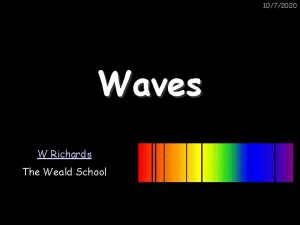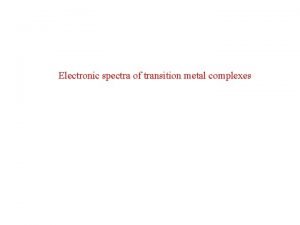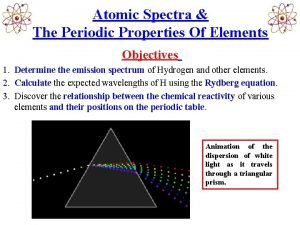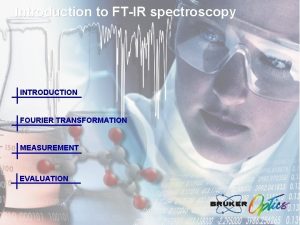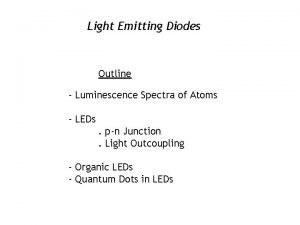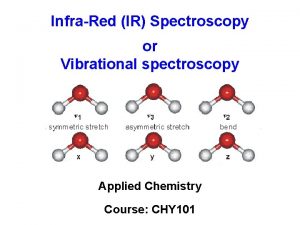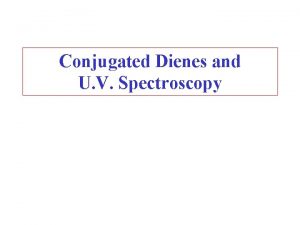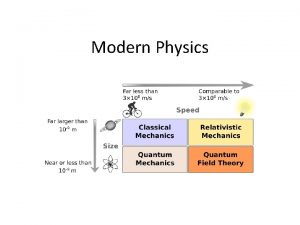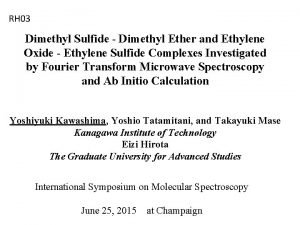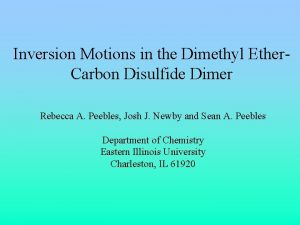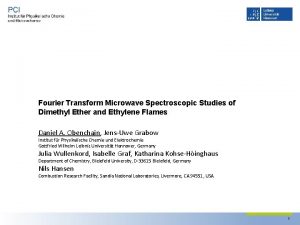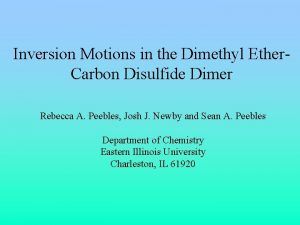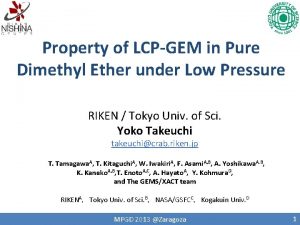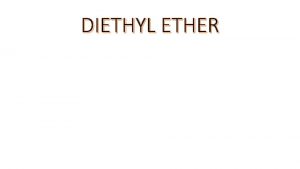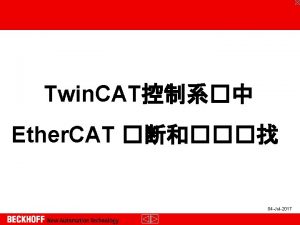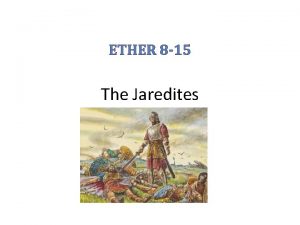DIMETHYL ETHER THREE DIMENTIONAL SPECTRA M VILLA U















- Slides: 15

DIMETHYL -ETHER THREE DIMENTIONAL SPECTRA M. VILLA U. A. M. -I. (México) and M. L. SENENT C. S. I. C. (Spain)

Objectives: We present preliminary results for DME 1) DME is an interstellar molecule detected by Snyder et al. Astrophys. J. (1974) 2) We are repeating a work that has been done previously. Theoretical study of the molecule Far-Infrared spectra : a) 2 D (Two CH 3 torsions) Senent et al. Can. J. Phys. , (1995). b) 3 D (Both CH 3 torsions + COC bending) Senent et al, J. Chem. Phys. (1995).

Why to repeat? Both old studies have been performed using MP 2/6 -31 G(d, p). Now we will use: State-of-the-art calculations: CCSD(T)/aug-cc-p. VTZ DZ Aug-TZ CH 3 interactions will be better described.

Why two preceding papers? 2 D model is insufficient to reproduce properly the band positions 3 D model allow us to describe well the interactions between H of the methyl groups The interaction between H of the methyl groups are quite strong Fermi interactions between the torsional modes and the COC bending mode. Conclusion: The three motions are not separable.

FIR Experimental: Groner et al (1977) RAMAN , Calculated: Senent et al (1995)

Internal coordinates : � 1 , and � 2 for the CH 3 rotation and the �for the COC bending.

a)the dipole moment has been calculated with MP 2/aug-cc-p. VTZ b)distances in A°; angles in degrees; dipole moment in Debyes; rotational constants in MHz Exp: = 1. 302 D


Anharmonic analysis (3 N-6 D) Performed using second order perturbation theory (FIT-ESPEC) 1) Preliminary results for torsional frequencies 2) Description of interactions between torsions and remaining vibrational modes Force field determination fij CCSD/aug-cc-p. VTZ fijk and fijkl MP 2/aug-cc-p. VTZ Force field calculated with GAUSSIAN


Perturbation theory A 0 = 38 788. 2 MHz B 0 = 10 056. 5 MHz C 0 = 8 886. 8 MHz Lovas, et al. J. Phys. Chem. Ref. Data. (1979).

Fundamental frequencies (in cm-1) COC Bending � 7 CH 3 Torsion � 15 CH 3 Torsion � 11 MP 2/6 -31 G** MP 2/aug-cc-p. VTZ CCSD/aug-cc-p. VTZ (Variational) (PT) Exp. 430 405 420 401 412 245 246 234 235 241 193 202 191 189


Future: variational calculation of isotopomers In progress : CCSD(T)/aug-cc-p. VTZ PES

Conclusions With this calculations one obtains an improvement for the spectroscopic parameters and the transitions. By using perturbation theory one is able to see the Fermi interactions. Thank you for your attention
 Dimethyl ether dipole dipole
Dimethyl ether dipole dipole Two dimentional figure
Two dimentional figure 3 6-diethyl-2 4-dimethyl-4-propylokta-1 7-dien
3 6-diethyl-2 4-dimethyl-4-propylokta-1 7-dien 3 6-diethyl-2 4-dimethyl-4-propylokta-1 7-dien
3 6-diethyl-2 4-dimethyl-4-propylokta-1 7-dien 3-methylcyklopent-1-en
3-methylcyklopent-1-en Dimethyl tetraphenylphthalate boiling point
Dimethyl tetraphenylphthalate boiling point Bright-line spectra worksheet answers
Bright-line spectra worksheet answers Nitro group ir peak
Nitro group ir peak Weald to waves
Weald to waves Racah parameter
Racah parameter Periodic table of spectra
Periodic table of spectra Introduction to ftir
Introduction to ftir Led luminescence
Led luminescence Infrared spectroscopy provides valuable information about *
Infrared spectroscopy provides valuable information about * Uv spectra of dienes
Uv spectra of dienes Line spectra
Line spectra
